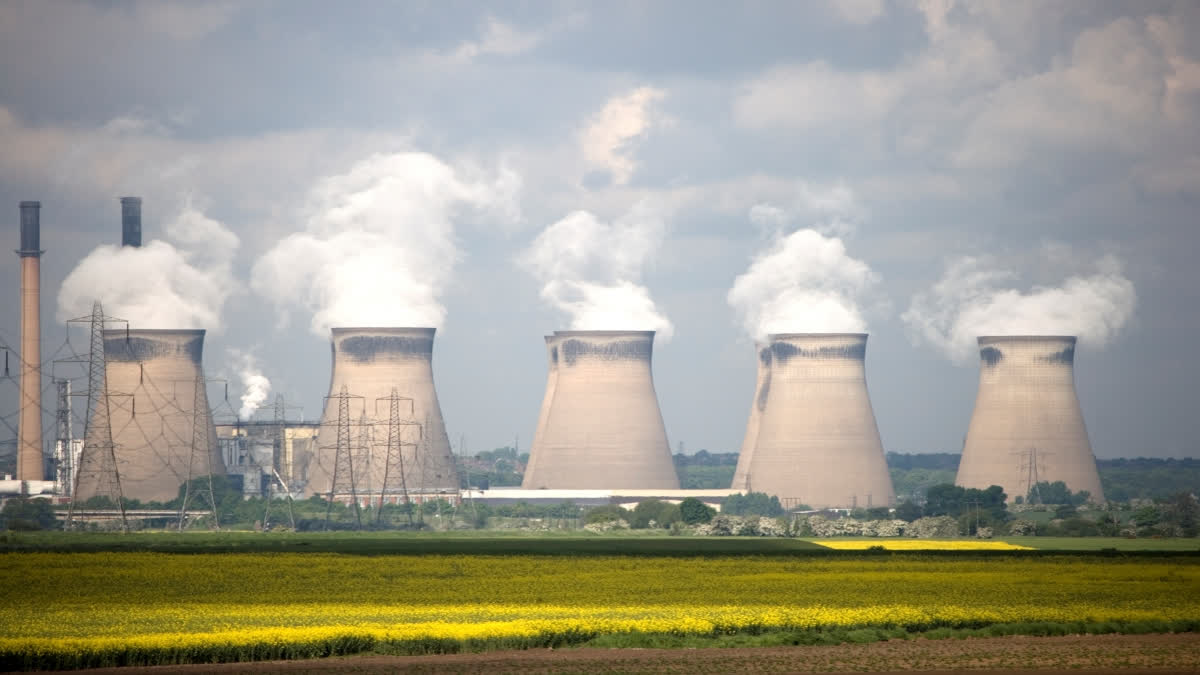New Delhi: Emissions from India's buildings sector between 2020 and 2070 are projected to reach 90.85 gigatonnes of carbon dioxide equivalent in the business-as-usual scenario, exceeding the carbon budget allocated for the entire country, according to a report released on Monday.
The countries are striving to achieve net-zero emissions (a balance between greenhouse gases emitted and removed from the atmosphere) to limit the rise in global average temperatures to 1.5 degrees Celsius and prevent further worsening of climate impacts. Becoming a net-zero economy is particularly challenging for India as it must achieve the dual goals of fulfilling developmental aspirations and curbing greenhouse gas (GHG) emissions.
The Sixth Assessment Report of the Intergovernmental Panel on Climate Change (IPCC AR6) estimated the remaining global carbon budget (from 2020 onwards) for a 50 percent chance of limiting global warming to 1.5 degrees Celsius to be 500 gigatonnes of CO2 equivalent. According to Climate Equity Monitor, India's fair share of this global budget is estimated to be around 89 gigatonnes of CO2 equivalent.
Climate science defines carbon budget as the amount of greenhouse gases that can be emitted for a given level of global warming (1.5 degrees Celsius in this case). India's buildings sector currently accounts for 25 per cent of the country's GHG emissions. This is expected to rise further as most of the buildings that will exist in the country in the next 30 years are yet to be built.
CSTEP's study developed net-zero pathways for India's buildings sector using its system dynamics model, Sustainable Alternatives Futures for India (SAFARI). "In the business-as-usual scenario, the cumulative emissions (direct and embodied) from buildings between 2020 and 2070 are projected to reach 90.85 gigatonnes of CO2 equivalent, exceeding the carbon budget allocated for India by 2 per cent," the report titled "Pathways to Steer India's Buildings Sector Towards a Net-Zero Future" said.
The researchers said achieving decent living standards will cause a further increase in emissions. Achieving developmental goals such as housing and clean cooking for all by 2030 would lead to cumulative emissions of 97.11 gigatonnes of CO2 equivalent, overshooting the carbon budget by 8 per cent, they said.
In the buildings-led scenario (BLS), which envisions the impacts of interventions driven by behavioral changes, such as opting for cleaner cooking fuel and uptake of energy-efficient appliances and solar rooftop systems, the annual embodied emissions can reduce by 16 per cent, while the annual operational emissions can come down by 69 per cent.
Embodied carbon refers to the emissions during the construction of a building rather than when it is in use. Interventions in the industry sector alone have the potential to reduce up to 59 per cent of the emissions, the report said. "Given that the indirect emissions due to building materials and electricity consumption could constitute 30 per cent and 50 per cent, respectively, of the total sectoral emissions, industries and the power sector have a major role to play in decarbonizing the (buildings) sector," it said.
The integrated scenario (BLS+ILS) would see a 72 per cent reduction in emissions and 47 per cent reduction in energy demand in 2070, resulting in a substantial saving of 1.83 gigatonnes of CO2 equivalent. This scenario utilises 54 per cent of the allocated carbon budget, but even with such aggressive decarbonization, emissions from the buildings sector do not reach net-zero levels, the researchers said.
They said carbon capture and storage (CCS) technologies are essential for attaining net-zero emissions, particularly in the industrial sectors (cement, steel, bricks). Other experts, however, say CCS is an expensive and unproven technology that distracts from global decarbonization efforts.
Ritu Mathur, Senior Energy Economist, NITI Aayog, said, "NITI Aayog is working on a state support mission to enhance action on the ground. For this, key challenges involve scaling up data and enabling green skilling. There is a lot of technology-based innovation, nature-based solutions, and a number of success stories but these are scattered. By collating them under one platform and making people aware of these solutions as well as using systems thinking to find a way forward can help us tap into benefits and advantages that are possible."
Shriti Pandey, Founder and CEO of Strawcture Eco, said: "There is a myth that using nature-based materials for building can be expensive. However, not only are they affordable but also locally sourced. The unique USP of using natural materials for construction is that they reduce carbon footprint while also providing thermal comfort within buildings."



